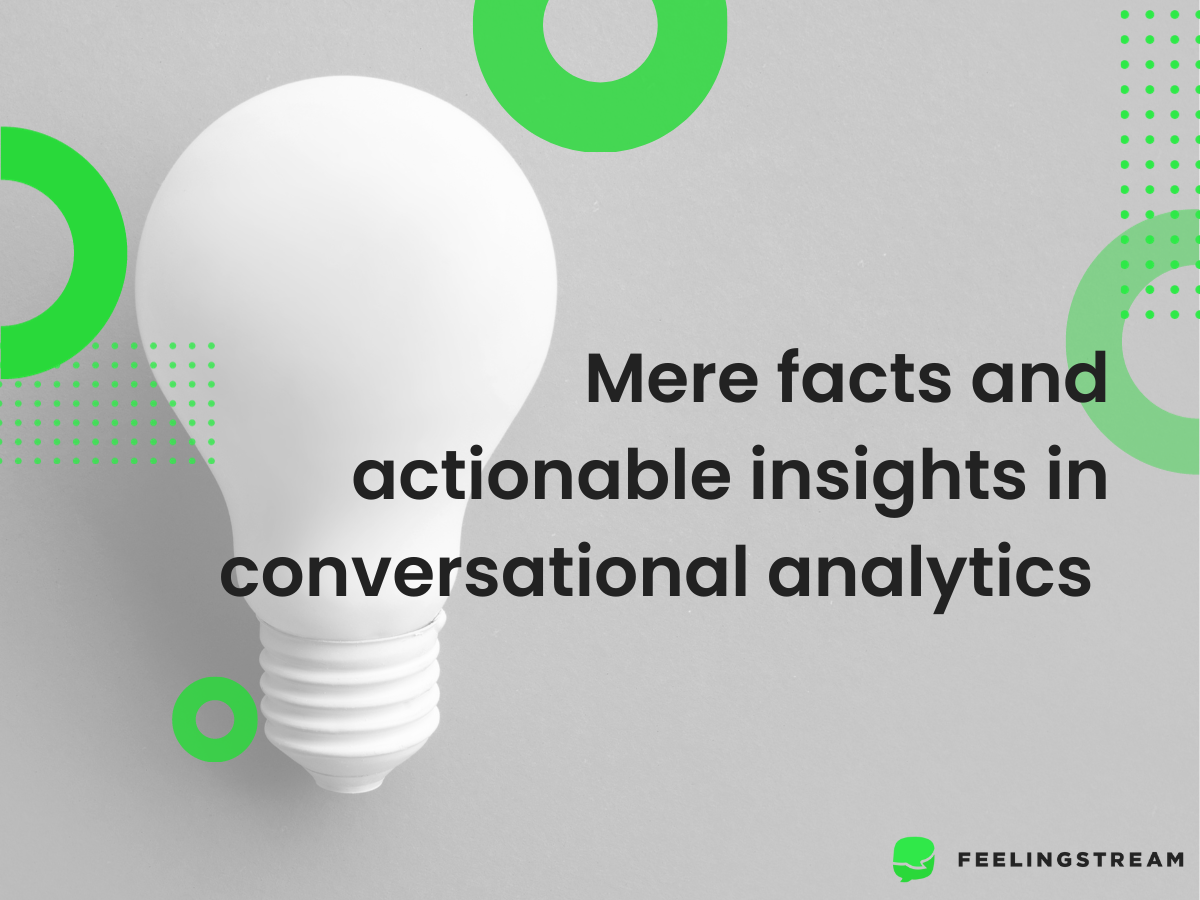In today’s data-driven world, companies are constantly seeking ways to improve customer service quality, efficiency, and boost sales. One powerful tool that has emerged in recent years is conversational analytics. This technology leverages natural language processing (NLP) and machine learning (AI) to analyse customer interactions, providing valuable insights that can help organisations enhance their customer service operations.
However, not all information is created equal. It’s crucial to understand the differences between actionable insights and mere facts that lack value in driving improvements. In this blog post, we’ll explore the distinction between these two concepts and how to make the most of conversational analytics in customer service.
What are actionable insights?
Actionable insights are findings that have the potential to drive meaningful changes within an organisation. These insights go beyond raw data and facts, providing a deeper understanding of customer behaviour, preferences, and pain points. Here’s what sets actionable insights apart from mere facts:
- Relevance to business goals: Actionable insights are directly related to the company’s goals. They give advice on how to improve the level of customer service, streamline processes, or make more sales.
- Level of detail: These insights are highly specific and fit the company’s needs. They point out specific issues or opportunities that require attention.
- Actionable: Just like the title says, these insights suggest actionable steps or strategies. They don’t just highlight problems; they provide solutions or paths for improvement.
- Data-driven: Actionable insights are based on data and patterns identified through analysis. They are not just guesses or thoughts.
- Measurable impact: making changes based on actionable insights should offer measurable results. These insights can be used to track progress and adjust strategies as needed.
Illustrating actionable insights
Here are a few examples to help illustrate what actionable insights are.
Finding a trend of customer complaints about a specific product feature, which leads to a targeted effort to improve the product.
Realising that one communication channel (like chat or email) consistently works better than others at solving customer problems, which leads to a shift in resources to that channel.
After finding that customers often abandoned their shopping carts because of running into a certain technology problem on the website, making efforts to fix the problem and increase the conversion rate.
What are just facts with little to no value?
On the other hand, not all data extracted from customer conversations be classified as actionable insights. There are often facts or observations that, while interesting, do not help to improve customer service quality, efficiency, or sales. Because they lack the qualities that make insights actionable, these data have no real significance for the company. Here’s how to recognise them.
- Lack of importance: These facts do not line up with the goals or business objectives of the company. They do not provide direction on how to reach those goals.
- Generalisation: Rather than focusing on specific concerns or possibilities, these facts provide broad, generalised knowledge that does not result in practical activities.
- There are no obvious action steps: Facts that have no value do not present a clear path for improvement. They declare the obvious without offering solutions to the stated problems.
- Not data-driven: These facts may be intuitive or based on a single incident rather than being backed up by a thorough examination of data and patterns.
- Lack of measurable impact: Changes based on these facts may not result in measurable improvements, making it difficult to evaluate their efficacy.
Examples of facts with no value
Knowing that the average customer call duration is 10 minutes without understanding why or how it could be improved.
Observing that customers occasionally mention the weather in their conversations with customer service agents, which has no direct impact on service quality or sales.
Recognising that customers from a specific geographic region tend to contact support more frequently, but not knowing if this information can be used to optimise service.
Working towards what matters
In conclusion, while conversational analytics holds immense potential for driving improvements, not all data is actionable. Companies should focus on extracting insights that are relevant, specific, and provide a clear path for enhancing their customer service operations. By distinguishing actionable insights from mere facts, companies can use the power of data to improve customer service quality, efficiency, and ultimately, boost sales.
Interested in actionable insights? You might also be interested in one of our earlier posts: What are actionable insights, and how do we find them in customer feedback?


